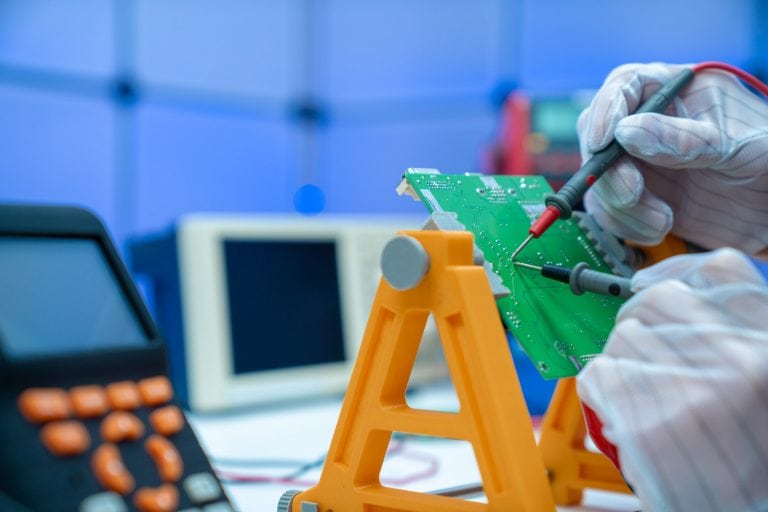Circuit Workbench
 Photo: © iStock_luchschen
Photo: © iStock_luchschen - Resource Type
- Experiment
- Subjects
- Physics
- Topics
- Electricity
- Time for activity
- 60 minutes
©From these experiments, you’ll be able to see that removing any one of the bulbs in a series circuit makes all the bulbs go out, but removing one or more of the bulbs in a parallel circuit has no effect on the remaining bulbs. You’ll also discover that the more bulbs you place in series, the dimmer each one gets, whereas adding more bulbs in parallel has no effect on the brightness of any of the bulbs.
- Introduction
-
From these experiments, you’ll be able to see that removing any one of the bulbs in a series circuit makes all the bulbs go out, but removing one or more of the bulbs in a parallel circuit has no effect on the remaining bulbs. You’ll also discover that the more bulbs you place in series, the dimmer each one gets, whereas adding more bulbs in parallel has no effect on the brightness of any of the bulbs.
Do you think the circuits in your house are wired in series or in parallel? If you have a toaster and radio plugged into the same outlet, does the radio go off when the toast is done? The fact that you can turn electrical items in your house on and off individually tells you that your circuits are wired in parallel. If this were not the case, then one burned-out lightbulb would mean all the other lights on the same circuit would go off, too.
In some textbooks, the direction of flow of electric current is defined as the direction positive charge would flow, which would be through the circuit from the positive terminal of the battery to the negative terminal. In reality, however, positive charges do not move in wires. It’s the negatively charged electrons that move, and they flow through a circuit from the negative terminal of the battery to the positive terminal. The definition of current as movement of positive charge has historical roots, and continues in use; current defined in this way is often called “conventional current.” In some situations (e.g., movement of charged particles in semiconductors, solutions, and gases), positive charges do actually move and contribute to electric current. For beginning work with simple circuits, however, it’s easier to deal with electron flow. In this activity, we’ve used the terms “current” and “electron flow” interchangeably.
- Key Objectives
-
- This simple circuit board lets you easily connect small holiday lights in a variety of ways and learn some of the characteristics of series and parallel circuits.
- Guiding Questions
-
- What happens to the bulb when you make the
final connection? Is it shining with a bright or
dim light? - How does the brightness of the single bulb
compare with the brightness of each of the two
bulbs? - How does the behavior of the two bulbs differ
from that of the three bulbs that were connected
differently?
- What happens to the bulb when you make the

/rating_on.png)
/rating_half.png)
/rating_off.png) (32 )
(32 )




